“Innovation and Inspiration”: The 2014 NSC Rising Stars of Safety
The National Safety Council presents the Rising Stars of Safety, Class of 2014
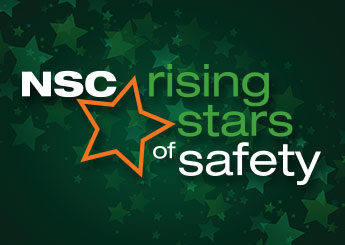
 |
Jason Chilton 35 Senior HSE and Facilities Leader Honeywell Aerospace Anniston, AL |
| “Under Jason’s leadership, the site has implemented a layered audit process, which begins with site employees identifying and reporting hazards, safe behaviors and at-risk behaviors through the ‘HSE Observation’ system. The next element involves leadership teaming up to perform specific audits of areas within and outside of the facility. Within a two-week period, the entire site is audited using targeted audit forms that challenge the auditors to look for hazards in the area and ask employees questions around safety in their daily activities. The audit schedule rotates quarterly to allow everyone the opportunity to audit with Jason. This helps increase the HSE acumen of each leader. Within each team, the site has trained safety monitors to act as a team focal [point] for safety issues.” | |
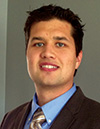 |
Kyle Cutsail 28 Global Safety Program Manager Solenis Hanover, PA |
| “When Kyle took the lead role, he brought an idea of creating a low-risk lifestyle in our employees. His vision was clear: If we reduced overall risk tolerance in every aspect of our employees’ lives, we would be focusing on the core of work-related injuries. Our group was ready for an observation program, but many of our employees work alone, and peer observations would be difficult. Kyle created a hybrid observation program focusing on trending risks that our field employees were overlooking day to day. As we learned to use the tool, Kyle encouraged the employees to take it home, using the auto-related on a son or daughter; the ladder-related on a neighbor. Soon we had as many quality at-home observations as at work. Employees have made the tool a part of their everyday life, not limiting risk reduction to on-the-clock hours.” | |
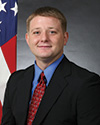 |
Aaron Davis 35 Supervisory Occupational Safety and Health Specialist Marine Corps Installations Pacific, Marine Corps Base Camp Smedley D. Butler Okinawa, Japan |
| “Aaron spearheaded the implementation of a monthly skills enhancement training exercise as a initiative to enrich the aptitude of safety specialists within the Installation Safety Office and to ensure the accuracy of facility and operational safety inspections. These training sessions have contributed to a higher degree of proficiency throughout the safety office and have provided a greater awareness of the trade-specific equipment, laws and national consensus standards used to enhance the application and enforcement of force preservation awareness and risk mitigation methods within the overall military community. This corresponds to a more informed safety staff capable of better identifying and mitigating risks.” | |
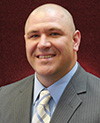 |
Shane Deaton 36 Safety Director Henry Bros. Co. Hickory Hills, IL |
| “In 2012, Shane piloted a program of safety data reporting utilizing smart devices. With a minimal budget, Shane tackled the safety audit for project sites. Using a low-cost iPad program, superintendents were given a site-specific safety audit that allowed thorough investigations with photos to be sent to upper management and other safety representatives for swift hazard resolution. He then incorporated Job Safety Analyses, Site-Specific Safety Plans, Lifting Guides, Interactive Toolbox Talks, and face-to-face weekly safety meetings between office and field personnel. At less than $100 per site, he achieved a perfect safety record DART rate for 2013, the company’s first in 13 years. Expanding on this success, HBC principals invested in a fully customizable interactive safety program, directed by Shane, which allows real-time safety updates and problem-solving attributes customized for employees from new hires to the top HBC construction officers.” | |
 |
Tehzin Dhanani 34 Health, Safety and Environment Manager Enwave Energy Corp. Toronto, Canada |
“Some real-life efforts that Tehzin has brought to the forefront include:
|
|
 |
Ami Gore 39 Safety Administrator Orange County Government Orlando, FL |
| “Ms. Gore saw a great opportunity to save the county money, reach out to employees, and effectively facilitate the creation of a positive safety culture by establishing an in-house safety training program for all employees at the site. She is an American Heart Association trainer for CPR, AED and first aid, and an authorized OSHA trainer. These credentials allow her to provide safety training in over 100 safety topics, and allow employees an opportunity to receive credentials. Not only do the employees receive valuable skills and information, but qualifications at the same time, which assist with motivation and interest in attending training classes. She has also provided free safety training throughout the community.” | |
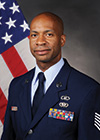 |
Calvin Grade 34 Technical Sergeant 730 Air Mobility Squadron Yokota Air Base Yokota, Japan |
| “Upon arrival to our organization, Calvin immediately completed a comprehensive trend analysis. This analysis reviewed all reported accidents, identified safety hazards and safety inspection results for previous years. The results of this analysis made Calvin believe there was much room for improvement. He expressed concern that supervisors and managers might not have a clear understanding of the safety and health requirements that affected their employees. Calvin took it upon himself to establish an installation-wide OSHA outreach training program and has since trained 121 managers. Since establishing this program, the amount of safety hazards identified by supervisors to the Safety Office has tripled.” | |
Post a comment to this article
Safety+Health welcomes comments that promote respectful dialogue. Please stay on topic. Comments that contain personal attacks, profanity or abusive language – or those aggressively promoting products or services – will be removed. We reserve the right to determine which comments violate our comment policy. (Anonymous comments are welcome; merely skip the “name” field in the comment box. An email address is required but will not be included with your comment.)

